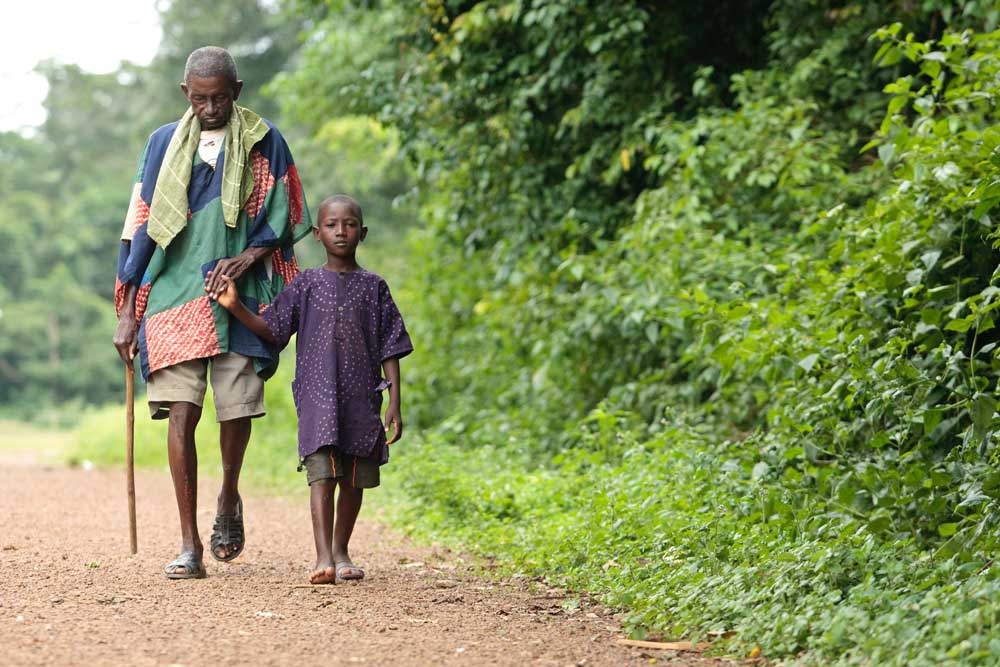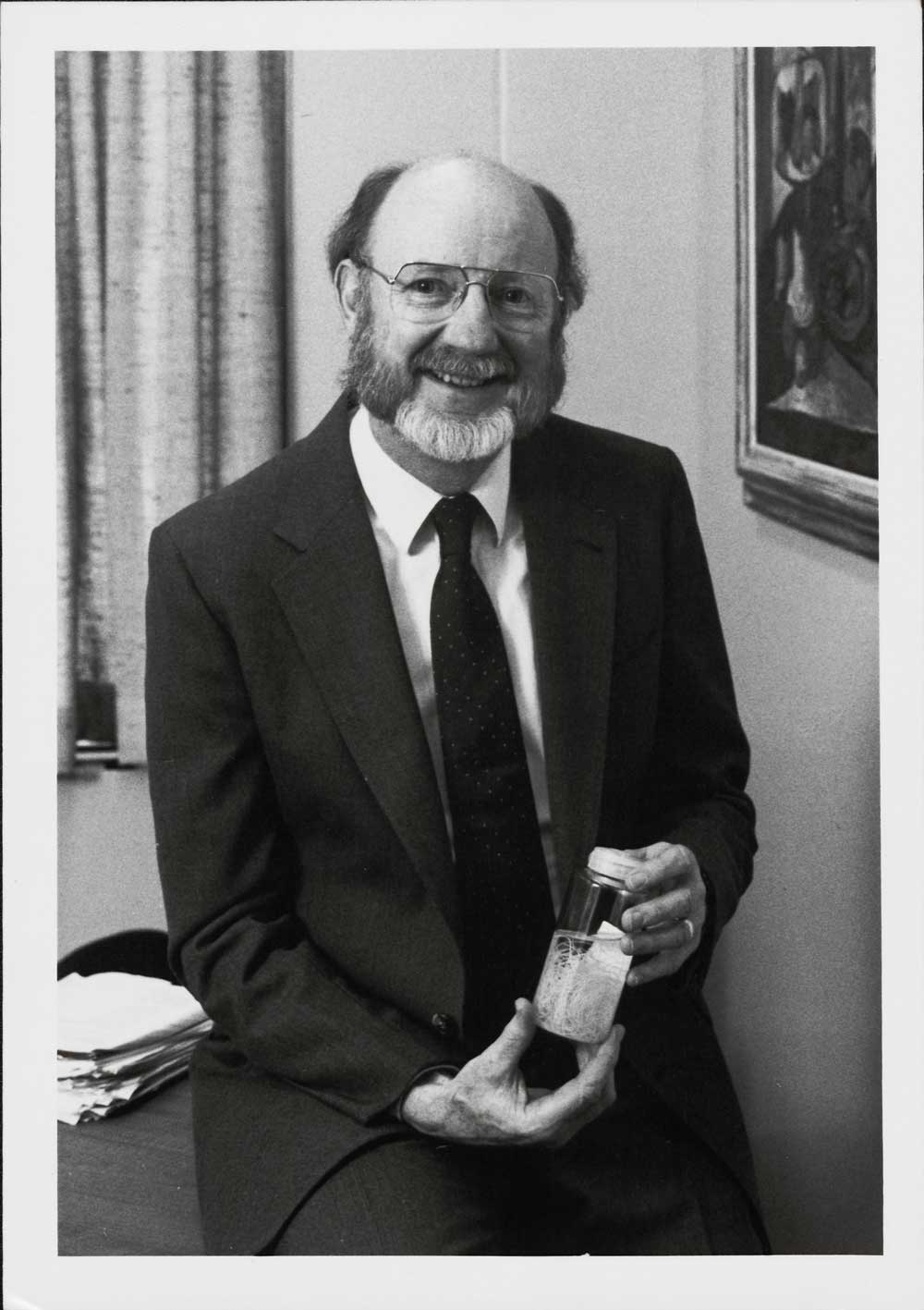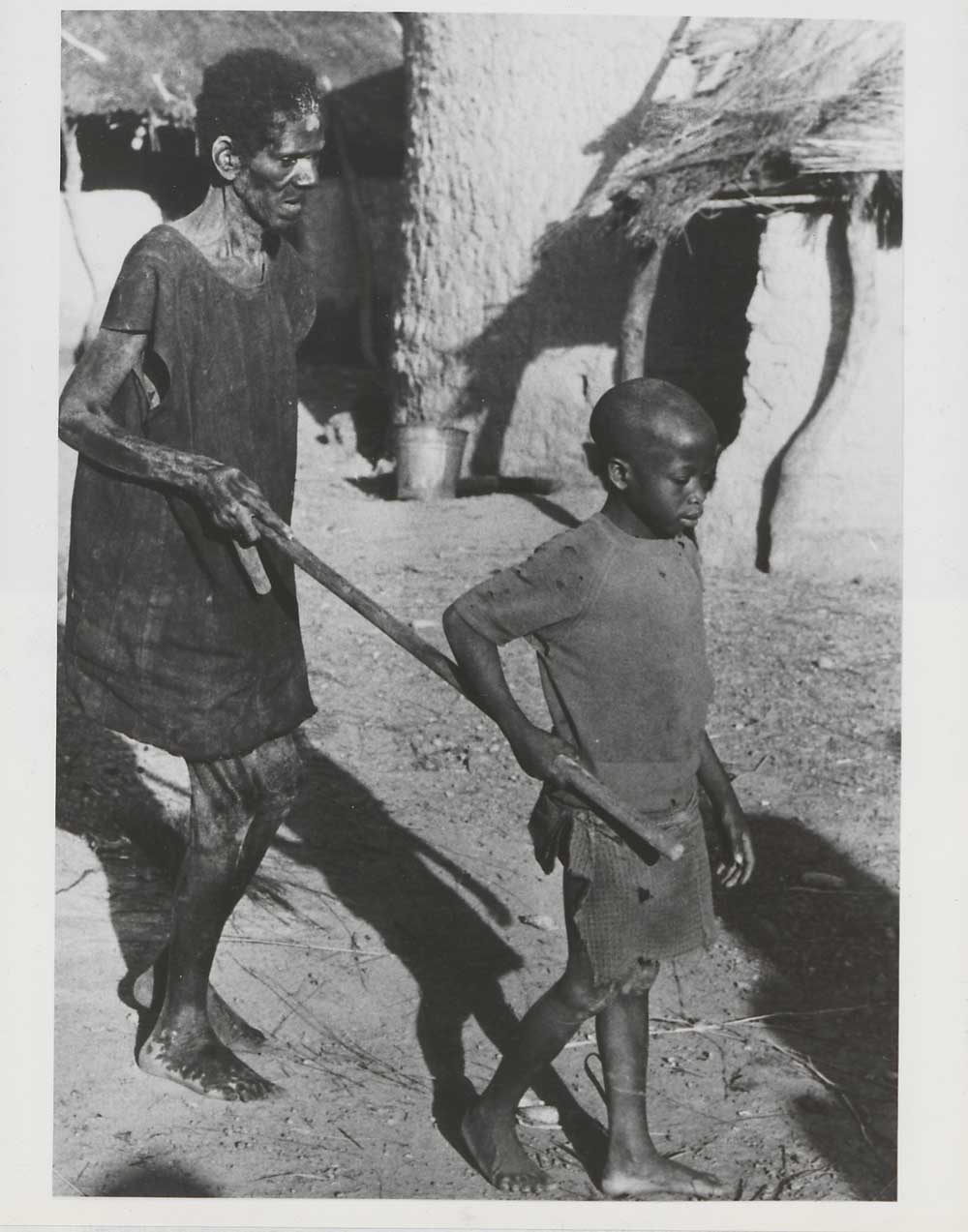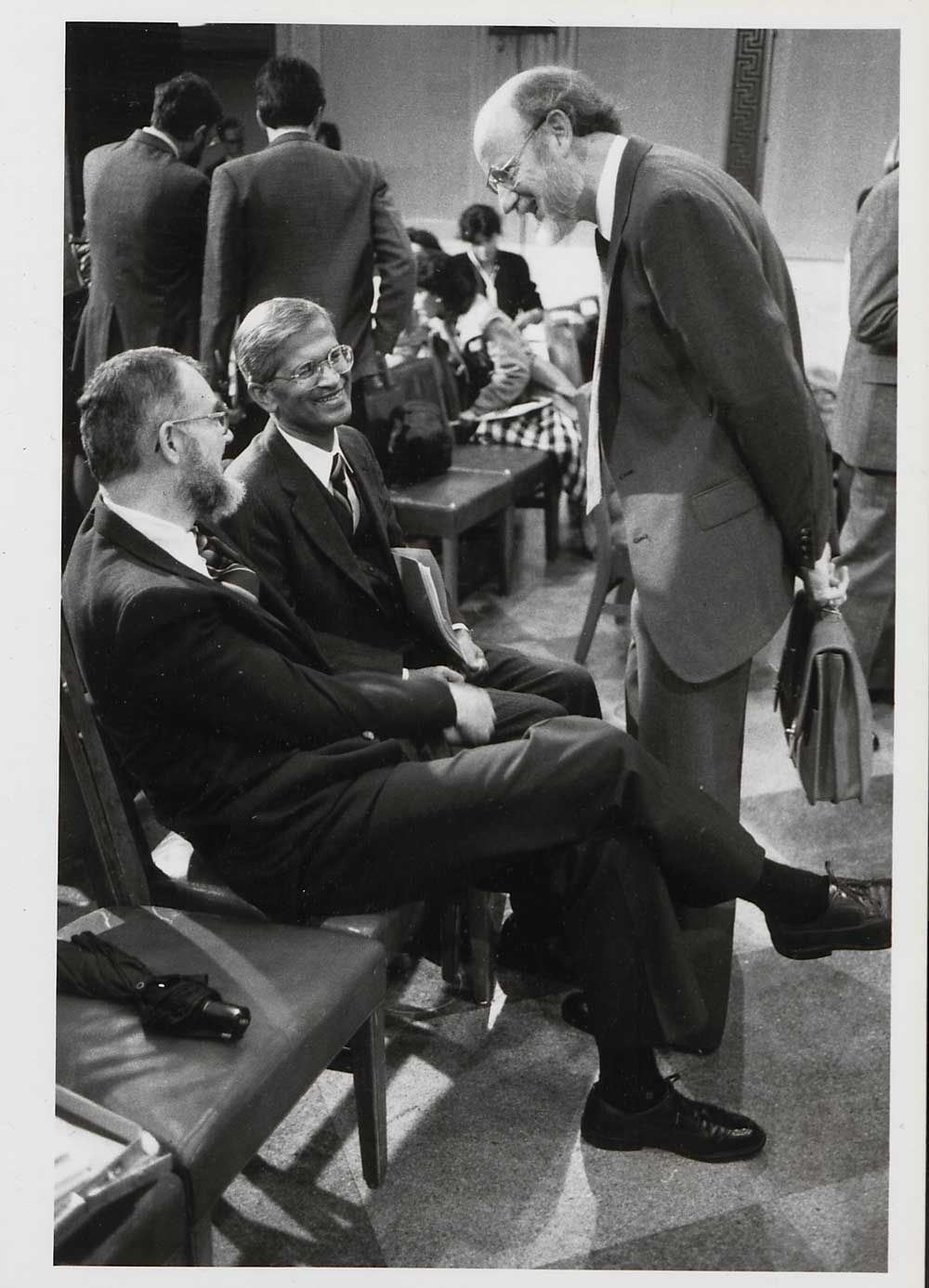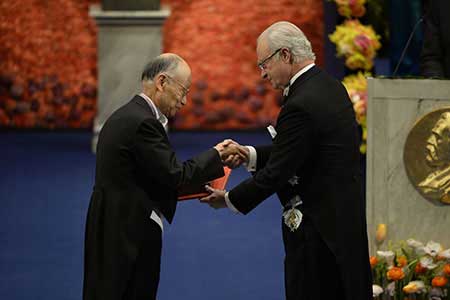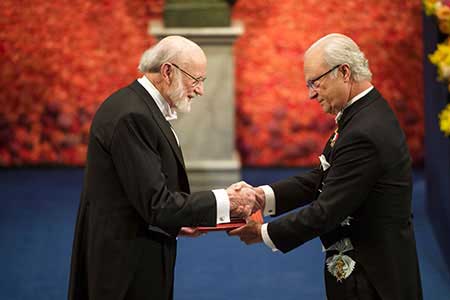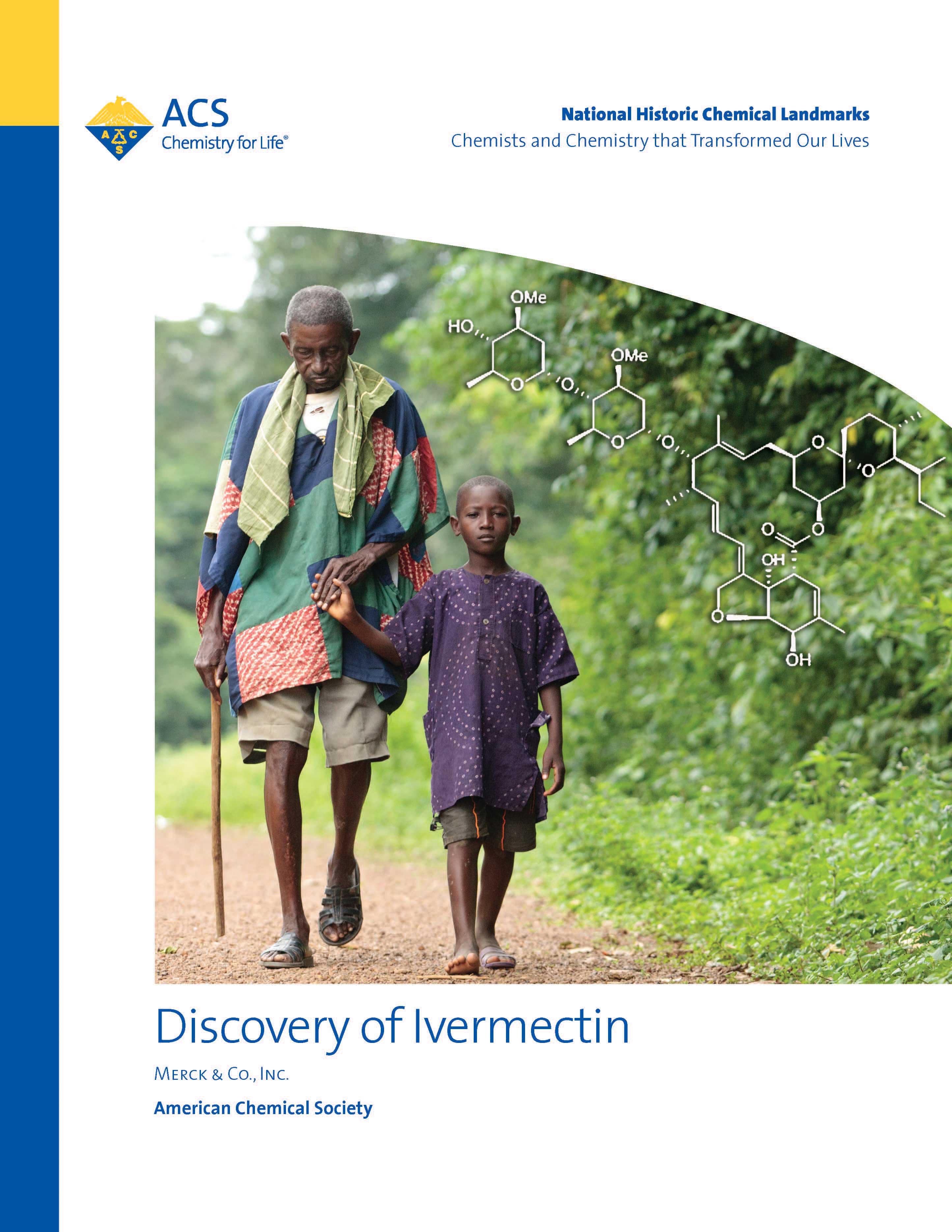Discovery of Ivermectin
Dedicated at Merck & Co., Inc., on December 2, 2016.
En español: El descubrimiento de la ivermectina
The story is so improbable it defies belief: a soil sample from Japan stops suffering in Africa. It starts when a scientist discovers a lowly bacterium near a golf course outside Tokyo. A team of scientists in the United States finds that the bacterium produces compounds that impede the activity of nematode worms. It is developed into a drug that wards off parasites in countless pets and farm animals, averting billions of dollars in losses worldwide. Extraordinarily, the drug also prevents or treats human parasitic diseases that would otherwise cause blindness and other severe symptoms in hundreds of millions of people in many of the poorest countries on Earth.
The tale depends on an international cast of thousands of scientists, medical practitioners and other dedicated participants. It also involves a company and research institute willing to give a drug away for free to rid the developing world of debilitating diseases.
Yet none of this would have happened without that soil dug up in Japan—and a healthy dose of serendipity.
Ivermectin has proved to be one of the most extraordinary drugs ever discovered for the treatment and control of parasitic diseases and has become an integral part of international public health programs.”
—Simon L. Croft and Steven Ward, “The Nobel Prize in Medicine 2015: Two drugs that changed global health,” Sci. Transl. Med., 2 December 2015
Mectizan®: International drug discovery
In the late 1960s and early 1970s, Satoshi Ōmura (*1935), a microbiologist and bioorganic chemist at Tokyo’s Kitasato Institute, hunted for new sources of pharmaceuticals. He knew that some existing drugs, including antibiotics, had been derived from compounds found in nature. So he developed screening methods to identify medicinally promising compounds from soil. His team collected thousands of soil samples from around Japan, cultured bacteria from them, and screened each culture for medicinal potential.
In 1971, Ōmura took a sabbatical in the laboratory of Max Tishler (1906–1989), an eminent professor of chemistry at Wesleyan University in Connecticut. A year earlier, Tishler had retired from an illustrious research career at the pharmaceutical company Merck. Before returning to Japan in 1973, Ōmura arranged a pioneering agreement between the company and the research institute. Kitasato would continue to collect samples and screen them, and then send the most promising ones to Merck Research Laboratories in Rahway, New Jersey, for testing and development. The institute would receive royalties from any products that were commercialized through the partnership.
At Merck Research Labs, a team led by parasitology specialist William C. Campbell (*1930) began testing the samples as potential treatments for parasitic worms. A veterinary scientist and zoologist by training, Campbell identified compounds that could be effectively developed as drugs for livestock and other animals.
To test potential treatments, the Merck researchers first infected mice with nematodes and then fed each mouse a different culture sample supplied by Ōmura’s team. They found that one culture was extraordinarily effective at ridding mice of worm infestations. This culture was derived from soil collected near a golf course in Kawana, about 80 miles southwest of Tokyo. Ōmura identified the bacterium in that culture as a new strain, which was ultimately christened Streptomyces avermectinius.
The Merck team isolated the active component produced by the bacterium and named it “avermectin.” They found that avermectin is actually a combination of eight closely related compounds. The researchers began chemically modifying the compounds, tweaking their molecular structures slightly to see if they could make avermectin even more potent against parasites and safer for the animals being treated. By synthesizing thousands of similar compounds, Merck scientists found that, with slight chemical modification, some of the avermectin compounds displayed enhanced activity as well as safety. They dubbed the resulting pair of avermectin derivatives “ivermectin.” The mixture was 25 times more potent than existing treatments for parasitic worms.
Further testing at Merck showed that ivermectin could also fight infestations by mites, ticks and botfly parasites that cause huge economic losses in the livestock industry. It was effective against parasites in horses, cattle, pigs, sheep and dogs, and was nontoxic to these animals.
These gratifying results led Merck to commercialize ivermectin as a veterinary treatment beginning in 1981. Starting in 1987, the drug was also marketed to the public under the brand name Heartgard® (now sold by the animal-health company Merial) to prevent heartworms in dogs. These products quickly became the top-selling veterinary medicines in the world, with sales topping $1 billion annually.
The goal...was to find an anthelmintic, that is, a drug that is effective against worm parasites (helminths). The goal furthermore was to find an anthelmintic that was not just a bit more potent than existing drugs, or a bit safer, or a bit broader in therapeutic spectrum, but to find one that was radically different."
—William C. Campbell, Inventive Minds, Oxford University Press, 1992
Treatment for river blindness
The cycle of parasitic disease often begins with a bug bite.
Blackflies that breed in fast-flowing rivers carry the larvae of the worm that causes onchocerciasis (also known as river blindness) in humans. When an infected fly bites a person, the fly deposits worm larvae on the person’s skin. The parasites enter the body through the bite wound, where they mature into adult worms that live and breed. Female worms release thousands of microscopic larvae that move throughout the body, including to the eyes, where they cause scarring that leads to blindness. The parasite also causes intense itching and disfiguring skin conditions. The disease occurs primarily in Africa, but also exists in Yemen and several Latin American countries. It is one of the leading causes of preventable blindness in the world.
At Campbell’s urging, his colleagues studied ivermectin as a potential treatment for river blindness. Ivermectin is a particularly attractive treatment because it has no antibacterial or antiviral activity, and has few serious side effects. Researchers discovered that’s because these drugs act primarily on cellular channels of the target organism that are not accessible in people, pets or livestock. In young worms, the drug alters the function of these channels in nerve and muscle cells, leading to paralysis. In addition, the drug makes these immature worms more vulnerable to the human immune response, and stops adult female worms from releasing larvae. This combined effect helps end the parasite infestation.
In its drug development efforts, Merck worked with the World Health Organization (WHO) to design and implement human clinical trials with ivermectin for river blindness in Senegal in 1981, under the direction of Mohammed Aziz (1929–1987). The results with single doses of the pill proved the effectiveness of the drug against river blindness, and ivermectin was approved for human use in 1987 under the name Mectizan®.
Mectizan Donation Program
Most patients who would benefit from Mectizan® live in developing nations. Recognizing that these patients would not be able to afford the drug at any price and no donors were willing to pay for it, Merck CEO P. Roy Vagelos (*1929) in 1987 announced the company’s commitment to donate “as much as needed, for as long as needed,” with the goal to help eliminate river blindness.
In order to reach this goal, Merck recognized that many organizations with unique skills would need to work together as a team. To enable this collaboration, the company established the Mectizan Donation Program (MDP), a ground-breaking public-private partnership. Operating from the Atlanta-based Task Force for Global Health, the MDP today coordinates technical and operational activities between Merck, WHO and a range of public and private stakeholders.
Mectizan® is also administered with albendazole—a drug donated by GlaxoSmithKline—as part of a massive campaign to eliminate lymphatic filariasis (also known as elephantiasis), another tropical disease that disrupts the immune system and is common among people living in under-resourced settings in approximately 80 countries.
Today, the MDP program reaches more than 250 million people, with more than 2 billion treatments donated since it was established. With this support, health authorities hope to eliminate these diseases within the next decade.
Further Developments
Additional uses for ivermectin and other avermectin derivatives continue to be found, including the treatment of infestations by other worms and by head lice, as well as scabies and strongyloidiasis.
Even after ivermectin went on the market, research continued on the bacterium that started it all. In 1999, Ōmura’s team announced that it had identified the genes that control biosynthesis of the avermectin compounds in S. avermectinius. In all, the organism relies on 17 genes to produce the enzymes required for the dozens of steps in this biochemical pathway.
Ōmura and Campbell’s contributions were honored with the 2015 Nobel Prize in Physiology or Medicine. They shared the prize with Tu Youyou (*1930) of the China Academy of Traditional Chinese Medicine, who has had a similarly outsized impact on the developing world by discovering a treatment for malaria. In conferring the award, the Nobel Assembly noted that the consequences of these researchers’ discoveries in terms of improved human health and reduced suffering are immeasurable.
The odds against finding avermectin and recognizing its potential were astronomical. It could so easily have been missed, and the life-altering pharmaceutical that Merck derived from it might never have been discovered.
Landmark dedication and acknowledgments
Landmark dedication
The American Chemical Society designated the discovery of ivermectin as a National Historic Chemical Landmark at Merck & Co., Inc., in Rahway, New Jersey, on December 2, 2016. The commemorative plaque reads:
The synthesis and development of ivermectin by Merck in the 1970s and 1980s provided a breakthrough treatment against infectious diseases transmitted by parasites. This discovery resulted from an international collaboration that screened hundreds of natural products to identify a promising lead compound. Merck scientists synthesized thousands of analogs of this lead and tested them. The result, ivermectin, offered a highly effective treatment for several parasitic diseases affecting a variety of animals. Following its approval for human use in 1987, Merck established a worldwide program to donate ivermectin as Mectizan® to treat onchocerciasis (river blindness), greatly reducing the prevalence of this debilitating disease. In 2015, Merck scientist William Campbell shared the Nobel Prize in Physiology or Medicine for his role in developing ivermectin.
A second plaque will be installed at Merck's Rahway research campus.
Acknowledgments
Adapted for the internet from "Discovery of Ivermectin," produced by the American Chemical Society's National Historic Chemical Landmarks program in 2016.
Additional resources
Lesson plan
Further reading
- Discovery of Ivermectin (American Chemical Society NHCL booklet; PDF)
- The Nobel Prize in Physiology or Medicine, 2015 (NobelPrize.org)
- Retired Merck Scientist William Campbell Wins Nobel Prize (Merck)
- Mectizan Donation Program: History (Mectizan Donation Program)
- The Ivermectin Story (Satoshi Ōmura)
- En español: El descubrimiento de la ivermectina
Cite this page
American Chemical Society National Historic Chemical Landmarks. Discovery of Ivermectin. http://www.acs.org/content/acs/en/education/whatischemistry/landmarks/ivermectin-mectizan.html (accessed Month Day, Year).

